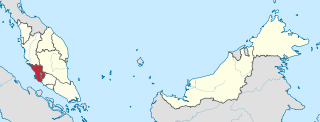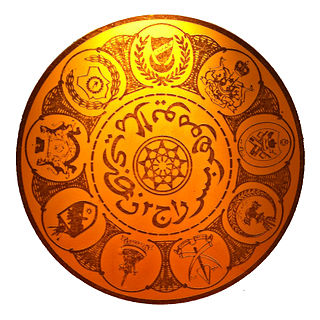| Sultan Sallehuddin Shah | |||||
|---|---|---|---|---|---|
| Sultan of Selangor | |||||
| Reign | 1742–1778 | ||||
| Coronation | 1756 | ||||
| Successor | Ibrahim Shah | ||||
| Born | 1705 | ||||
| Died | 1778 | ||||
| Burial | Royal Cemetery, Bukit Melawati, Kuala Selangor | ||||
| Spouse | Y.A.M. Engku Puan binti Paduka Sri Sultan 'Alauddin Ri'ayat Shah of Riau | ||||
| Issue | Raja Ibrahim Shah Raja Nala Raja Punuh Raja Perak Raja Sharifah | ||||
| |||||
| House | Daeng Chelak (branch of Riau, Indonesia) | ||||
| Father | Daeng Chelak bin Daeng Rilaga | ||||
| Mother | Tengku Mandak | ||||
| Religion | Sunni Islam | ||||
Raja Lumu (Sultan Sallehuddin Shah ibni Almarhum Daeng Chelak; 1705–1778) was the first Sultan of Selangor. He was the son of the famous Bugis warrior prince Daeng Chelak. He took on the title of Sultan Sallehuddin of Selangor in 1742. The Bugis had already begun to settle on the West coast of the Malayan Peninsula towards the end of the 17th century.

Selangor, also known by its Arabic honorific Darul Ehsan, or "Abode of Sincerity", is one of the 13 states of Malaysia. It is on the west coast of Peninsular Malaysia and is bordered by Perak to the north, Pahang to the east, Negeri Sembilan to the south and the Strait of Malacca to the west. Selangor surrounds the federal territories of Kuala Lumpur and Putrajaya, both of which were previously part of it.

Peninsular Malaysia, also known as Malaya or West Malaysia, is the part of Malaysia which lies on the Malay Peninsula and surrounding islands. Its area is 132,265 square kilometres (51,068 sq mi), which is nearly 40% of the total area of the country - or slightly bigger than England and South Korea. It shares a land border with Thailand in the north. To the south is the island of Singapore.
Following Raja Lumu, two other Bugis Chiefs settled in the Selangor area: Raja Tua in Klang and Daeng Kemboja in Linggi, south of Lukut. Raja Lumu originally met with opposition from the Sultans of Perak and Johor, as well as from the Dutch, but eventually managed to consolidate his position as sovereign. By 1770, his legitimacy was strengthened by marriage to the niece of the Sultan of Perak on November 1766. [1]

Lukut is a suburb in Port Dickson District, Negeri Sembilan, Malaysia. Lukut is situated within the parliamentary constituency of Port Dickson. The historical Kota Lukut is located here and also Sekolah Menengah Teknik Port Dickson

Perak, also known by its honorific Darul Ridzuan or "Abode of Grace", is one of the thirteen states of Malaysia, and the fourth-largest one. It borders Kedah at the north; Thailand's Yala and Narathiwat provinces to the northeast; Penang to the northwest; Kelantan and Pahang to the east; Selangor to the south, and the Straits of Malacca to the west.

The Sultan of Johor is a hereditary seat and the sovereign ruler of the Malaysian state of Johor. In the past, the sultan held absolute power over the state and was advised by a bendahara. Currently, the role of bendahara has been taken over by chief minister with the constitutional monarchy system via Johor State Constitution. The Sultan is the constitutional head of state of Johor. The Sultan has own independent military force Royal Johor Military Force. The Sultan is also the Head of Islam in Johor state.
The latter, Sultan Muhammad "invested Salehuddin with the insignia of Malay royalty and also attended the subsequent installation ceremony in Selangor". To this alliance, he soon added another, by marrying his own daughter to the Sultan of Kedah, Sultan Abdullah Mukarram Shah, the most northerly of the Western Malay Sultanates.










